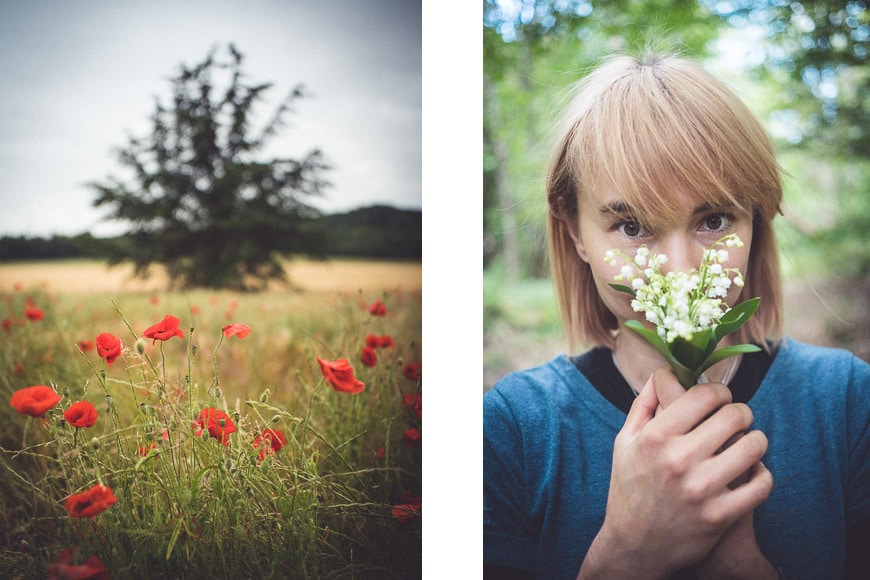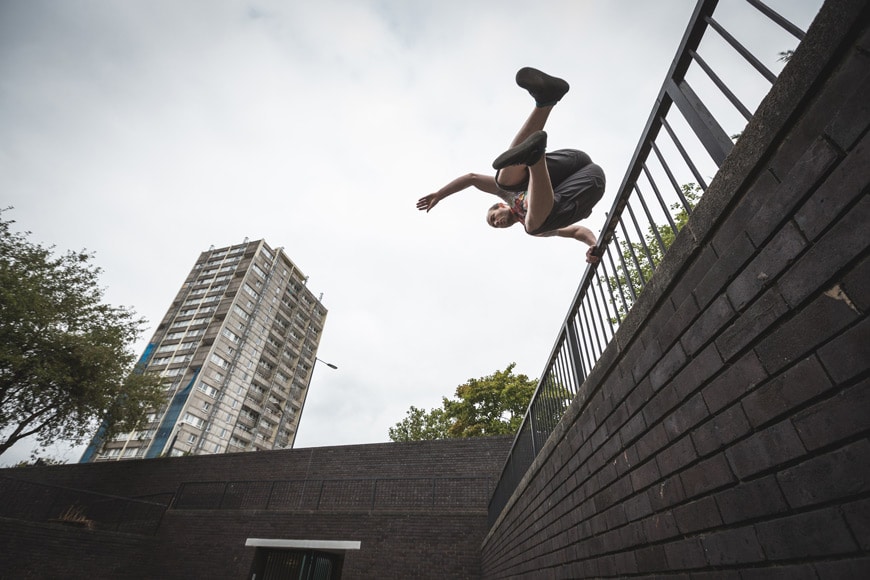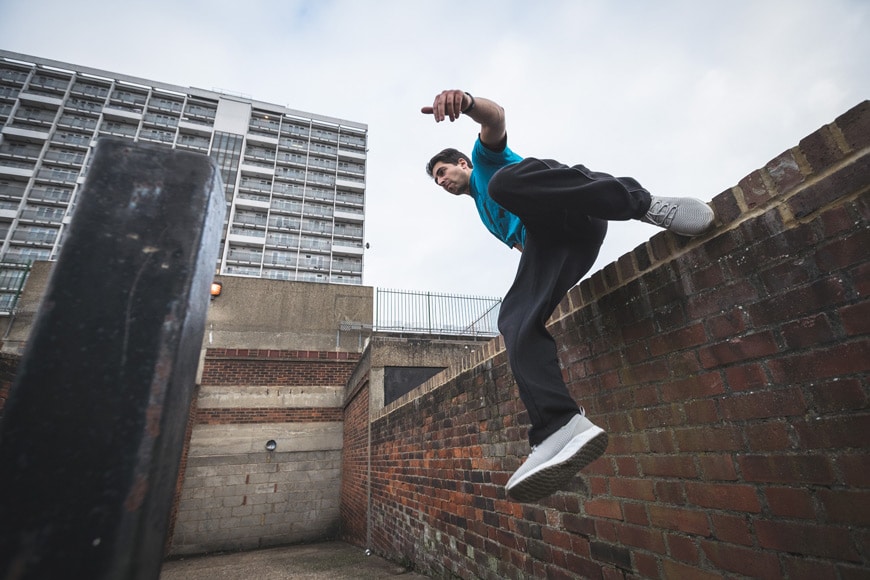
Guide to Balance in Photography
Find out the best tips on balance in photography in this must-read guide! Learn how to get started or take your shots to the next level.
Learn | Photography Guides | By Andy Day
Understanding how to use balance in your photography is crucial to creating images that have an impact on your viewer.
Balance can be quite an abstract concept to get your head around and for this reason, it often doesn’t get as much focus as it should.
Alike balance in art, balance in photography helps to guide the viewer’s image around the image without resting too heavily on any one particular part, creating a sense of satisfaction.
Balance will play a major role in shaping the emotional response that a photo creates so it’s important to understand how it can affect your image-making and how you can put this knowledge to good use.
See also: What is Radial Balance
What is Balance in Photography Composition?
Balance is a way of using the composition of a photo to create a sense of unity, giving a viewer a feeling of satisfaction. All of the elements within the photo work with one another, making the image complete and cohesive.
Alternatively, you might want to create a sense of imbalance to instil a feeling of disharmony, purposefully creating tension that will put your viewer on edge and disrupt their sense of how a photo should sit together.
Balance draws on mankind’s history of image-making, relying on conventions that have been used in fine art paintings for centuries. Not only do our brains naturally like these conventions, but they also teach us how to understand every new image that we see.
If an image feels balanced, it’s something that we know instinctively and can appreciate, even if that appreciation is completely unconscious.
How we choose to juxtapose the various competing elements in our photo will determine the sense of balance and there are several ways of understanding how this balance works.
(For more inspiration, check out these examples of juxtapostion photography used recently.)
What are the Types of Balance in Photography?
There are five different types of balance in photography.
While you might not set out with your camera and think: “Right, I’m going to use this type of balance to take this photo of this specific subject”, getting to know these basic principles will give you a solid foundation for developing as a photographer.
1. Formal / Symmetrical

Formal photos are symmetrical, typically splitting the image using an imaginary, vertical line down the centre so that the left and right halves are fairly close to being identical, or at the very least hold equal amounts of visual weight.
Some small details in the scene might disrupt this symmetry, but the main subject has enough symmetrical balance that it gives an overwhelming sense of evenness in the photo, with each side of the image feeling even.
This is how many of us start out in photography: putting the subject of the image right in the middle of the frame so that there is even space on each side.
This is a basic and understandable way of creating a photo: you want to capture something in an image and it makes sense to position it in the most important part of the frame: the middle.
Symmetrical photographs surround us, often happening where an image just needs to be simple, such as in a portrait, or as a means of conveying or illustrating a basic message.
The human brain loves patterns and because of this, symmetry in photography can really grab a viewer’s attention.
While we might be keen to move on to more complex means of composing photographs, the simplicity of symmetrical balance can make it a powerful tool. It’s perfect for an impactful image where you want as few distractions as possible, and it also lends itself well to subjects such as beauty or glamour.
A perfectly centred face taps into our understanding of symmetry as something that is desirable and attractive, feeding on our own subconscious feelings that a symmetrical face is a beautiful face.

Credit: Pat Whelen
Formal photography draws heavily on fine art, going all the way back to paintings from the 15th century, or even as far back as Greek temples from 600 BC. Symmetry gives us a feeling of stability, calmness, tranquillity, and formality.
How Much Do You REALLY Know About Photography?! 🤔
Test your photography knowledge with this quick quiz!
See how much you really know about photography...

It can give us a sense that something is complete, crafted with precision and control.
The central line dividing an image doesn’t necessarily need to run vertically. Sometimes, a sense of balance symmetry can be implied, and it can even occur diagonally:

Because of all of this, a formal photo can be childishly simple in its approach, or perhaps painfully obvious in its construction, or carefully constructed to give a strong sense of balance and harmony — or possibly even a mixture of all three.
2. Informal / Asymmetrical

An informal photo uses asymmetry in its composition, creating more complex images.
At first, you might assume that this means that an informal photo is unbalanced, but the technique draws on the brain’s love of patterns to juxtapose elements in the frame so that they feel as though they are placed perfectly in relation to one another.
It is the relationship between the different elements that create a sense of balance in photography, drawing again on how as a society we have learned to see images, shaped by a history of art and the images that surround us every day.
A photograph with asymmetrical balance often ties in closely with the rule of thirds. In a photo that is 3:2 in ratio and landscape in orientation, we can take the subject away from the centre of the frame and position it so that it sits on one of the two imaginary, vertical lines that the rule of thirds suggests.
The rest of the scene will determine how the main subject can be placed when creating this sense of asymmetrical balance, but it is important to remember that a subject gains visual weight the closer it gets to the edge of the image.
Other factors such as geometry also play a key part in how this balance is created. Consider these two triangles:


The first triangle has stability and doesn’t feel like it needs to move. By contrast, the second triangle, though occupying an almost identical position, creates tension, its left-hand corner pointing us away from the centre of the frame, reflecting its unstable base and giving the impression that it wants to escape.
The first image gives a sense of asymmetrical balance, while the second image implies a sense of tension.
Similar things can occur with people. A portrait of a person positioned to one side of a frame looking inwards feels calm, but if that person is positioned to the left and is looking to the left, it creates a sense of stress.
If a person has space within the frame to gaze into — often referred to as looking space — there is a feeling of balance.
This is emphasised further if a person is moving. Consider this photo:

Even though the geometry of the composition might be pleasing, the photograph gives a sense of uncertainty as it’s not clear where the person is about to go.
A viewer might feel that this image isn’t entirely satisfying because their sense of balance is disrupted by the movement of the person towards the edge of the frame.
By contrast, giving the person space to move into can create a sense of balance and harmony:

Another way to balance out a subject that you have placed off centre is to use a secondary element on the opposite side of the image — not to balance the image perfectly in terms of symmetry or weight, but to act as a compliment.
Negative space — empty areas — can feel heavy in their visual weight, and breaking up that space can create a sense of evenness.
Often, the secondary element offers contrast to the primary subject, differing in size, geometry, brightness, vibrancy, color, texture — even focus or proximity to the lens. Background elements can be used to complement the main foreground interest.
In this example that hints towards the rule of thirds, the distant, out of focus people compliment the main subject:

Contrasting colors can also be effective:

Sometimes, depending on how it is framed, the negative space in an image can offer enough contrast to give balance:

3. Tonal Balance

Tonal balance is a form of informal balance and is best understood in terms of black and white photography.
We often try to create an even spread of tones within an image, from complete black, through a range of shades of grey, through to complete white.
Darker areas naturally carry more visual weight, and tonal balance is achieved when the various elements of an image balance out the heavier areas.
4. Color Balance

Credit: Claudio Fonte
Color offers another type of informal balance. Vibrant colors naturally carry more visual weight, while more neutral tones hold less, allowing us to try and find balance between the two.
Bold colors can feel overwhelming, and mixing in more neutral shades can even out an image. Alternatively, you might use colors that are on the opposite side of the color wheel to give balance.
This isn’t always something that we can control while shooting, but it might be something that you look to emphasise when you come to edit your photographs.
5. Conceptual Balance

Conceptual balance is the final type of informal balance, this time moving away from the form of a subject and towards a type of balance that is metaphysical — i.e., more abstract ideas such as knowledge, being, time, and space.
Rather than using a secondary element that offers contrast in terms of shape, distance, color, tone, texture, etc., balance is achieved because the theme of that secondary element is starkly different to the main subject.
A photo that uses conceptual balance might juxtapose a historic stone building with a glass skyscraper or, as seen in our example, confinement versus freedom.
See more about conceptual photography here.
Tips for Creating Balance In Your Photographs
- Think geometrically – as you take more photographs, you will naturally start to see more geometric shapes in your images and you will start to learn how they fit together to create a pleasing and balanced composition.
- Go minimal – if a composition feels unbalanced, see if you can remove anything that is unnecessary, reducing what’s in the frame to its essential parts. The fewer elements, the easier they are to balance.
- Edit your work – this doesn’t mean playing with presets in Lightroom; instead, it means looking through your images and figuring out which ones work — and why they work.
- Play with cropping – sometimes a weak composition can be turned into a great photo by simply cropping it intelligently. Try different ratios too — 4:5 and 1:1 lend themselves to different ways of balancing a photo.
- Try a wide-angle lens – a wide-angle lens — something between 24mm and 35mm, perhaps — can feel a bit challenging at first because it takes in so much of what’s in front of you. However, the width makes it easier to find geometric shapes, and it also gives you more options to crop when you come to edit.
- Take a lot of photos – the beauty of digital photography is that there’s almost no limit to the number of photographs you can take so try lots of different compositions for the same subject. Your odds of getting a great photo are increased and by looking through your photos, you will start to learn why other compositions didn’t quite work as well.
- Spend time with the masters – the biggest names in the history of photography knew how to create balanced compositions and their work can be a valuable resource for developing your eye. And don’t forget painters — photographers are simply following the rules that they established!
- Practice – improving balance in your photographs isn’t achieved by memorising this article and applying the ideas to every photo. Finding balance comes from experience, and experience comes through practice.
Balancing Photography | Final Words
Balance is a complex subject when it comes to creating impactful photographs and, as mentioned, it’s not enough to read about how it works. Instead, an understanding of balance in photography comes through taking lots of images and figuring out what works and what doesn’t.
Hopefully, this article is a good starting point! Don’t be shy if you have any questions — simply drop us a comment down below. Good luck!

Check out these 8 essential tools to help you succeed as a professional photographer.
Includes limited-time discounts.













